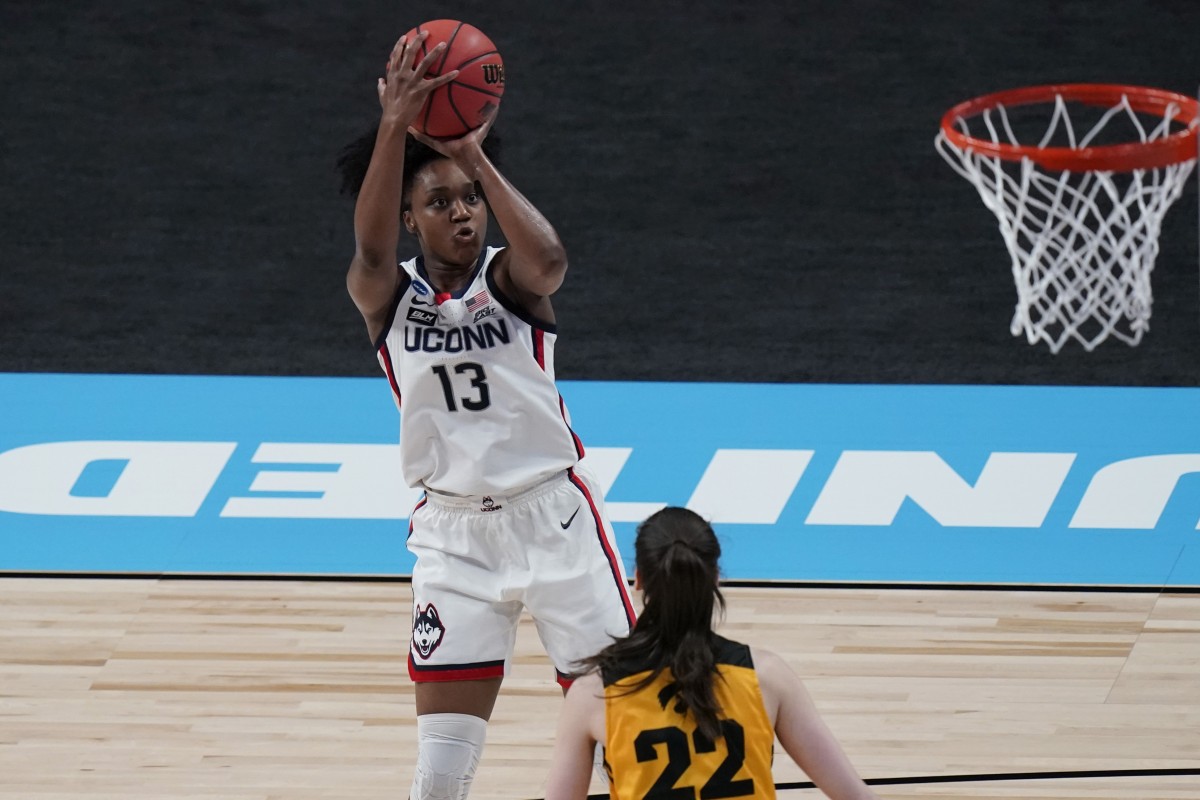The NCAA has never prioritized the health and safety of its athletes and yet every level seems like a new low.
It’s not just the weight room.
On Thursday afternoon, Ali Kershner, the performance coach at Stanford, posted a jarring image of the workout facilities that the women’s NCAA tournament teams had access to compared to the men. The men, who are in Indianapolis, had a giant room equipped to the gills while the women, who are in San Antonio, had one rack of dumbbells and a stack of yoga mats.
Kershner’s pictures went viral and, bowing to public pressure, the NCAA released a weak statement blaming the lack of equipment on “limited space.”
That frail excuse was debunked just as quickly, as Oregon player Sedona Prince showed in her viral TikTok.
The weight room sparked such outrage not because people have grown accustomed to men and women receiving the same treatment, but because the discrepancy was so outrageous and so obvious, it was a slap in the face.
And yet, that wasn’t even the most glaring example of the unequal treatment between the men and the women during the NCAA tournament. As news of the weight room made its way through social media, other stories started to emerge.
First, the food.
Here’s a side-by-side of images taken from Prince’s TikTok, and from a tweet posted by Alan Bishop, Director of Sports Performance for Men’s Basketball at University of Houston, of the food that men and women are getting.
At the least, the dining experince for the men certainly looks better.
Also noteworthy, the difference in the swag bags.
It may seem like a minor thing, but the amount and quality of free goods sent to the athletes shows where the priorities of the organization lie, and it’s not in making the women feel welcome. As people pointed out on social media, the NCAA was so petty that the puzzles included for the men had 500 pieces, while the women got ones with only 150 pieces.
It’s absurd but the real insults keep going.
As The Athletic pointed out, the NCAA also refused to make allowances for child care for coaches during the tournament, which primarily effects the female coaching staff of women’s teams. The NCAA will offer no childcare stipend, and for mom’s who choose to bring their breastfeeding children, that child counts against the team’s traveling party.
These choices are utterly thoughtless and negatively impact women the most.
Finally, there are the COVID tests. As first reported by Amanda Christovich, the NCAA is using PCR tests for men’s teams and daily antigen tests for the women’s teams.
The PCR tests are often called the ‘gold standard’ of COVID testing. According to the FDA, “antigen tests are very specific for COVID-19, but are not as sensitive as molecular PCR tests. This means that there is a higher chance of false negatives than with many molecular tests.”
NCAA President Mark Emmertn told USA TODAY he wouldn’t get into a debate over testing.
“I’m not a medical expert so not going to get into a debate about PCR and antigen. All the health experts said the protocol that we’re using in all of our venues and all of our championships has no different at all in terms of our ability to mitigate risk,” Emmert said.
The difference in COVID testing are the starkest and most brutal reminder of all the other ways the NCAA has failed its female athletes during the tournament.
The weights, the food, the swag bags were all surface level markers that showed how little the NCAA cared about the women, but the different COVID tests are irrefutable proof of who and what the organization values.
The NCAA has never prioritized the health and safety of its athletes, which is why so many athletes have chosen to speak up via the hashtag, #NotNCAAProperty, yet every new level they sink to seems like an unexpected low.
In the end, all the NCAA does is reap the financial rewards from the hard work of unpaid athletic laborers, who have long tried to make their voices and concerns heard.
This is the latest example of their utter callousness, lack of thought and fierce allegiance to a financial bottom line that enriches no one but themselves. This is not just about the women getting the very short end of the stick, but shows the lack of care, gratitude and respect the organization actually has for its female athletes.
What’s happening inside the women’s tournament is an absolute disgrace, and one that just adds to the long list of the NCAA’s embarrassments.




